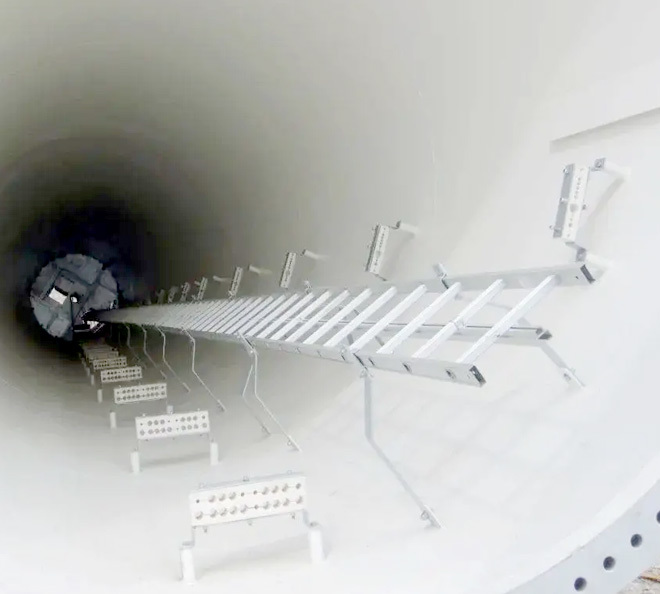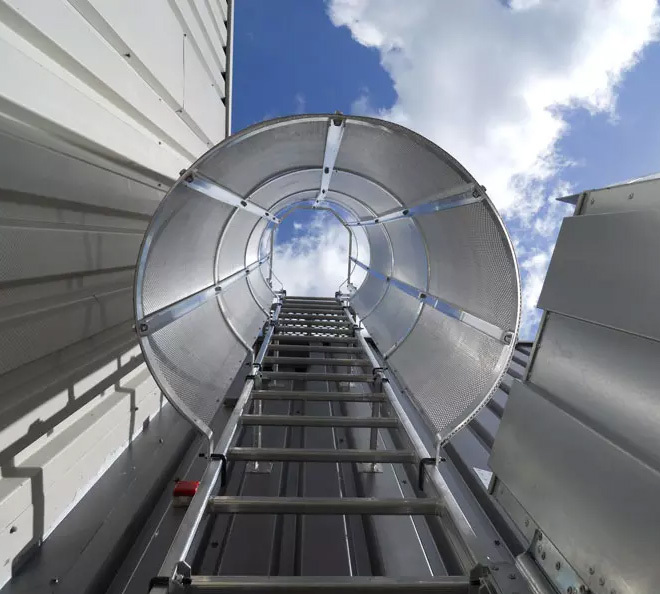NEWS
The industry is constantly evolving to address challenges and boost efficiency:
Date:
2025-06-19
Source:
Harnessing the Breeze: The Power and Promise of Wind Energy
Wind, an elemental force that has shaped landscapes and powered sails for millennia, is now at the forefront of the global clean energy revolution. Wind energy, the process of converting the kinetic energy of moving air into electricity, has evolved from humble beginnings into a sophisticated and rapidly growing pillar of sustainable power generation.

**The Mechanics: From Breeze to Bulb**
Modern wind energy capture relies primarily on towering wind turbines. These engineering marvels consist of three key components:
1. **The Rotor:** Large blades, often over 50 meters long, are aerodynamically designed to capture the wind's energy. As the wind blows, it creates lift and drag forces, causing the blades to rotate.
2. **The Nacelle:** Housed atop the tower, this compartment contains the critical machinery – a gearbox (in most designs) that increases the rotational speed from the slow-turning blades, and a generator that converts this mechanical energy into electrical energy.
3. **The Tower:** Elevating the rotor to heights where wind speeds are stronger and more consistent is crucial for efficiency. Towers can exceed 100 meters, placing the blades well above ground turbulence.
The electricity generated is then fed through transformers and into the power grid, ultimately reaching homes, businesses, and industries.

**Why Wind? The Compelling Advantages**
The surge in wind energy deployment is driven by undeniable benefits:
* **Clean & Renewable:** Wind power produces electricity without burning fossil fuels, meaning **zero greenhouse gas emissions** during operation. It relies on an infinitely renewable resource – the wind.
* **Abundant Resource:** Wind is a vast, globally available resource. Significant potential exists both onshore (land-based) and offshore (in bodies of water).
* **Cost-Competitive:** Technological advancements and economies of scale have dramatically reduced the cost of wind energy. It's now one of the **cheapest sources** of new electricity generation in many parts of the world, often rivaling or undercutting fossil fuels.
* **Water Conservation:** Unlike thermal power plants (coal, gas, nuclear), wind turbines require virtually no water for operation, a critical advantage in water-scarce regions.
* **Land Use Flexibility:** Onshore wind farms can often coexist with agricultural activities. Offshore wind utilizes vast ocean spaces without competing for land.
* **Energy Security:** Harnessing domestic wind resources reduces dependence on imported fossil fuels, enhancing national energy security.
**Growth and Global Impact**
Wind energy is experiencing explosive growth:
* Global installed capacity surpassed **1 Terawatt (1,000 Gigawatts)** in 2023, a testament to its scalability.
* Leading nations include China, the United States, Germany, India, and Spain, with significant investments flowing into offshore wind, particularly in Europe and Asia.
* Major projects, like the Hornsea wind farms off the UK coast, demonstrate the massive potential of offshore wind to power millions of homes.
**Navigating the Challenges**
Despite its promise, wind energy faces hurdles:
* **Intermittency:** The wind doesn't blow constantly or predictably. This variability requires complementary solutions like energy storage (batteries), grid flexibility, backup power sources, and a diversified renewable mix (solar, hydro).
* **Location Dependency:** The best wind resources are often remote from major population centers, necessitating significant investment in transmission infrastructure.
* **Visual and Environmental Impact:** Large turbines can alter landscapes/seascapes, raising aesthetic concerns. Careful siting is crucial to minimize impacts on bird and bat populations, as well as marine ecosystems for offshore projects.
* **Initial Investment & Materials:** Manufacturing, transporting, and installing large turbines requires substantial upfront capital and raw materials. Recycling turbine blades at end-of-life remains an active area of development.
**Innovation Driving the Future**
* **Larger Turbines:** Bigger rotors capture more wind, and taller towers access stronger winds, significantly increasing energy output per turbine.
* **Floating Offshore Wind:** Enables deployment in deeper waters, vastly expanding the potential offshore resource base.
* **Advanced Materials:** Lighter, stronger composites improve blade design and durability.
* **Smart Grid Integration & AI:** Enhanced forecasting and grid management technologies help balance wind's variability.
* **Blade Recycling:** Research into efficient recycling methods for composite blades is intensifying.
**The Road Ahead**
Wind energy is no longer a niche technology; it's a mainstream power source playing a vital role in decarbonizing the global electricity sector. While challenges related to intermittency, grid integration, and environmental considerations persist, relentless innovation and falling costs continue to strengthen its position.
As the urgency to combat climate change intensifies, harnessing the power of the wind offers a proven, clean, and increasingly affordable pathway towards a more sustainable and secure energy future. The breeze blowing across plains and oceans carries within it the potential to light our homes, power our industries, and help preserve our planet for generations to come. The future of wind energy is bright, and it's blowing strong.
keywords:
wind power
Previous
Related news



